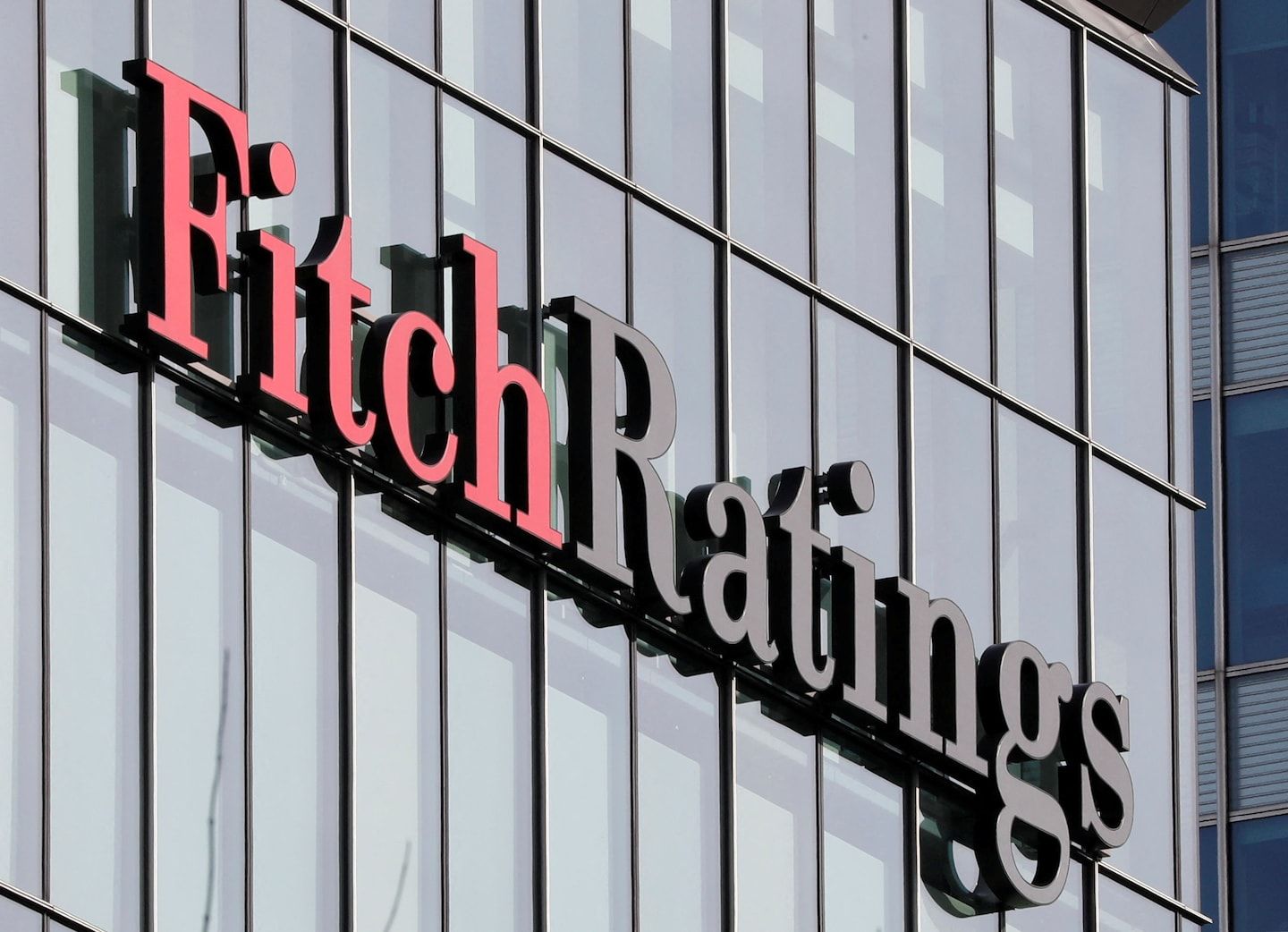Why U.S. credit rating was downgraded and debt is rising
Listen 7 min Comment on this story Comment Gift Article Share
After a private meeting with senior Biden aides in July, analysts at Fitch Ratings sent the administration a draft report outlining their assessment of the federal government’s credit and asking for corrections and notes, according to a Treasury Department official. Get a curated selection of 10 of our best stories in your inbox every weekend. ArrowRight The draft did not say whether the ratings agency would downgrade U.S. credit, the official said, and Biden aides were optimistic that their successful handling of a debt ceiling standoff this spring meant that wouldn’t happen. So the officials were shocked on Monday when Fitch announced the downgrade anyway, ignoring objections raised by senior Treasury officials in the two weeks before the final decision.
Senior White House officials, including Treasury Secretary Janet L. Yellen, National Economic Council Director Lael Brainard and Council of Economic Advisers chair Jared Bernstein, spent Tuesday coordinating the administration’s response, which involved striking back at the ratings agency as soon as its analysis was released.
Yet while it caught the White House by surprise, the decision to downgrade U.S. government debt after the spring showdown reflects Washington’s persistent battles over rising federal debt, now projected to approach levels unseen since the end of World War II. Fitch’s warnings, echoed by numerous nonpartisan forecasters, found that the national debt has soared and shows no sign of slowing. In justifying its downgrade, the ratings agency highlighted tax cuts and spending increases over the last several decades, and argued that it is unlikely Congress will act to rein in debt before the 2024 presidential election.
Advertisement
The rising debt tide may pose a political challenge for President Biden, who has repeatedly touted the decline in the deficit since Donald Trump left office but still faces a large debt burden that is expected to grow. Inflation under Biden has eroded the debt as a percentage of the economy, and interest payments as a share of the economy remain — at least for now — below their historic highs.
But many experts say long-term debts — now more than $31 trillion — also loom as a threat to U.S. fiscal health. It remains especially unclear how Congress will resolve funding crises for Social Security and Medicare, two massive government programs that both face automatic cuts starting early in the next decade if no action is taken. While Republicans and Democrats alike have blamed the other party for adding to the debt, lawmakers have shown no appetite for approving measures aimed at large-scale deficit reduction.
“We avoided a very bad situation with the debt ceiling, but we did not fundamentally address the problems with long-term spending and long-term revenue we have going forward,” said G. William Hoagland, a senior vice president at the Bipartisan Policy Center, a Washington-based think tank. “We are going to have to deal with this again at some point.”
The Biden administration has echoed the view that long-term federal debt needs to be addressed, which only added to aides’ frustration with the downgrade.
Advertisement
Senior officials with Treasury, the Office of Management and Budget, and the Council of Economic Advisers met with Fitch in April and then had a follow-up meeting in July. After receiving the draft report, senior Treasury officials — led by Nellie Liang, Josh Frost and Eric Van Nostrand — pushed back hard on a potential downgrade, hammering the agency for only now updating its methodology to reflect a drop in its assessment of U.S. governance that occurred while Trump was president, but that has improved under Biden.
In its statement on Tuesday announcing the decision, Fitch cited both U.S. political dysfunction and the rising debt burden as reasons to doubt the government’s ability to repay all its bills. Bringing the rating from “AAA” to “AA+,” Fitch pointed to “repeated debt limit standoffs and last-minute resolutions.” The debt ceiling sets the maximum legal amount the Treasury Department can borrow, and failure to raise it in time — which takes an act of Congress — could mean bondholders of U.S. debt aren’t repaid in full.
Richard Francis, a senior director at Fitch Ratings, told Reuters that the Jan. 6 insurrection incited by Trump played a role in the downgrade, as it underscores domestic divisions that could jeopardize lawmakers’ response to fiscal crises. In pushing back on the ratings change, the administration also noted that Jan. 6 had helped sway Fitch.
Advertisement
Fitch pointed to a “high and growing” debt burden over the next several decades — an outlook buttressed by other bleak predictions about the U.S. government’s fiscal trajectory. In June, the nonpartisan Congressional Budget Office projected that U.S. debt would reach 181 percent of the nation’s total economic output by 2053. The CBO also projected the debt would reach 107 percent of the nation’s gross domestic product by 2029. Rising interest rates, pushed up as the Federal Reserve has tried to fight inflation, will also make payments on future debt more expensive as a line-item in the federal budget.
White House officials expressed exasperation with the ruling. While acknowledging the challenge posed by long-term federal debts, administration officials say they have improved governance and brought down the deficit. They also emphasized that the Biden administration has dealt effectively with high-stakes fiscal standoffs, particularly compared to the 35-day government shutdown that occurred during the Trump administration. (Another shutdown could come this fall, though, as lawmakers are nowhere near agreement on government spending levels for the next fiscal year.)
Jason Furman, a former Obama administration economist and now a professor at Harvard, pointed out that Fitch last year outlined criteria for evaluating U.S. credit that included the debt-to-GDP ratio, “deterioration in governance quality” and macroeconomic performance. All three indicators have shown improvement, Furman said.
Advertisement
“My interpretation was that if there was a severe disruption related to the debt ceiling, the ratings agencies reserved the right to downgrade our debt,” said Ben Harris, who until recently was a senior official at Treasury and regularly met with the ratings agencies. “But I would not characterize what happened as a severe disruption. The debt resolution was pretty orderly compared to 2011, and it makes the timing of this bizarre.”
Some economists disputed the idea that rising federal debt poses a constraint on the government’s ability to pay its bills. In the short term, excessive federal spending can spur dangerous inflation, said Dean Baker, an ally of the White House and economist at the Center for Economic and Policy Research, a left-leaning think tank. But there is no reason to believe the United States will prove unable to print enough money to pay its bondholders, absent a manufactured crisis over the nation’s spending limit.
“The idea that we have a problem paying our debt — which is in dollars, and when we print dollars — is ludicrous,” Baker said.
Advertisement
And yet Biden has defined his own success in part by claims of lowering the deficit that now look increasingly uncertain. Biden repeatedly says he cut the deficit by $1.7 trillion in two years, although much of that decline reflects the end of pandemic aid programs that were always intended to be temporary. Last year’s Inflation Reduction Act, which Biden has widely touted for reducing the deficit, is proving to be more expensive than initially anticipated. And a cooling economy is beginning to lead to a decline in corporate tax revenue.
In 2011, Standard & Poor’s, another ratings agency, downgraded U.S. debt after debt ceiling standoffs with a Republican House under the Obama administration. The fallout was muted, with stocks continuing largely on their trajectory before the downgrade and borrowing rates staying low. Counterintuitively, interest rates declined as the financial uncertainty led investors to seek the safety of U.S. Treasury bonds.
But it is unclear how markets will react this time. Treasury yields rose Wednesday to their highest levels since November, potentially reflecting weaker investor demand for government debt. Major stock indexes all fell slightly.
Source: The Washington Post


